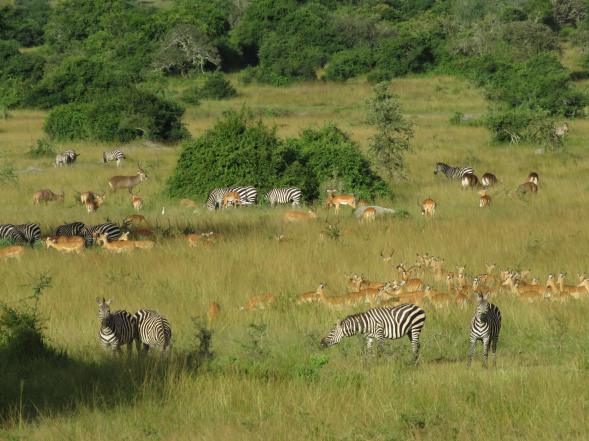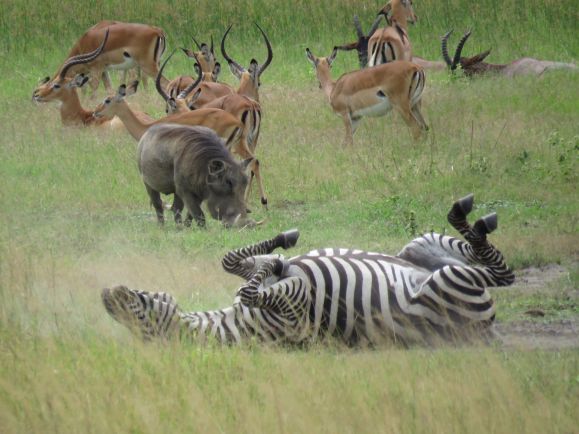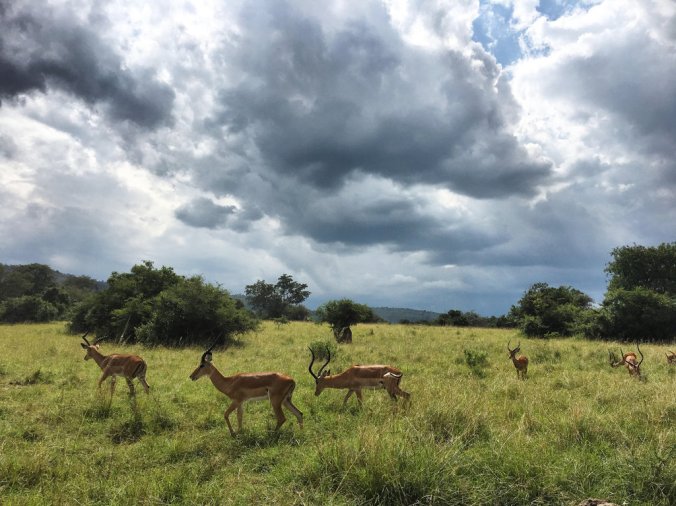
Impala, zebras, topi, and waterbuck share this savanna scene in Akagera National Park
The next park we visited on the Rwanda Study Tour after Nyungwe was Akagera National Park. Although the park was created in 1934, it’s only been run by a partnership between the Rwandan government and an NGO called African Parks—which helps manage about fifteen parks on the continent—since 2010. At this point, a change in operation style and protection started to help wildlife bounce back as well as increase visitation to the park. Back in 2010, the park hosted around fifteen thousand visitors per year and only made about $200,000 (while losing money), but last year the park received thirty-six thousand visitors and made $2,000,000 (getting out of the red for the first time).

A zebra gives itself a dustbath while a impala, two topi, and a warthog watch on



